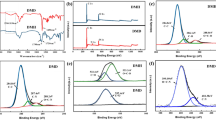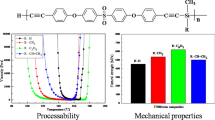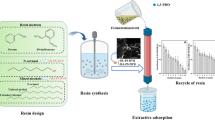Abstract
In the process of strong acid resin synthesis, the process step of acetone washing is meant to extract diluent and homopolymer/oligomers from styrene–divinylbenzene base copolymer. Acetone accounts for ~80 % of the cost of the chemicals involved in the synthesis of the copolymer. Acetone also causes environmental pollution and poses health risks to workers. This study demonstrates that the acetone washing can be eliminated in the case of a broad range of solvents commonly employed as diluents in the synthesis of copolymers. Specifically, hydrocarbons such as petroleum ether, isooctane, n-heptane, xylene and toluene can be extracted based on steam distillation phenomena during the curing of the copolymer; esters such as diethylphthalate and butyl stearate are sulfonated and/or hydrolyzed and washed with water; alcohols such as 1-hexanol, tert-amylalcohol, benzoyl alcohol, and ketones such as cyclohexanone are partially soluble in water and can be washed with hot water. The residual homopolymers/oligomers are sulfonated and washed with water. Residual esters have no negative effect and traces of residual alcohols or ketones either have no negative effect or they significantly increase the sulfonation of the copolymer compared to that of acetone-washed copolymers.




Similar content being viewed by others
References
Dorfner K (1991) Ion exchangers. Walter de Gruyter, New York
Kun KA, Kunin R (1968) Macroreticular resins. III. Formation of macroreticular styrene–divinylbenzene copolymers. J Polym Sci A-1 Polym Chem 6:2689–2701
Seidl J, Malinsky J, Dusek K, Heitz W (1967) Macroporous styrene–divinylbenzene copolymers and their use in chromatography and for the preparation of ion exchangers. Adv Polym Sci 5:113–213
Watters JC, Smith TG (1979) Pilot-scale synthesis of macroporous styrene–divinylbenzene copolymers. Ind Eng Chem Process Des Dev 18:591–594
Okay O (1999) Formation of macroporous styrene–divinylbenzene copolymer networks: theory vs. experiments. J Appl Polym Sci 74:2181–2195
Durie S, Jerabek K, Mason C, Sherrington DC (2002) One-pot synthesis of branched poly(styrene–divinylbenzene) suspension polymerized resins. Macromolecules 35:9665–9672
Arshady R (1991) Beaded polymer supports and gels: I. Manufacturing technique. J Chromatogr 586:181–197
Arshady R (1991) Beaded polymer supports and gels: II. Physico-chemical criteria and functionalization. J Chromatogr 586:199–219
Okay O (2000) Macroporous copolymer networks. Prog Polym Sci 25:711–779
Liu Q, Wang L, Xiao A (2007) Research progress in macroporous styrene–divinylbenzene co-polymer microspheres. Des Monomers Polym 10:405–423
Brooks BW (2010) Suspension polymerization processes. Chem Eng Technol 33:1737–1744
Gokmen MT, Du Prez FE (2012) Porous polymer particles—a comprehensive guide to synthesis, characterization, functionalization and applications. Prog Polym Sci 37:365–405
Diego CG, Cuellar J (2005) Synthesis of macroporous poly (styrene-co-divinylbenzene) microparticles using n-heptane as the porogen: quantitative effects of the DVB concentration and the monomeric fraction on their structural characteristics. Ind Eng Chem Res 44:8237–8247
Diego CG, Cuellar J (2006) Determination of the quantitative relationships between the synthesis conditions of macroporous poly (styrene-co-divinylbenzene) microparticles and the characteristics of their behavior as adsorbents using bovine serum albumin as a model macromolecule. Ind Eng Chem Res 45:3624–3632
Dragan ES, Avram E, Dinu MV (2006) Organic ion exchangers as beads. Synthesis, characterization and applications. Polym Adv Technol 17:571–578
Malik MA, Ali SW, Waseem S (2006) A simple method for estimating parameters representing macroporosity of porous styrene–divinylbenzene copolymers. J Appl Polym Sci 99:3565–3570
Al-Sabti MD, Jawad JK, Jacob WF (2007) Preparation of macroporous styrene–divinylbenzene copolymers. Eng Technol 25:1041–1048
Scheler SA (2007) A novel approach to the interpretation and prediction of solvent effects in the synthesis of macroporous polymers. J Appl Polym Sci 105:3121–3131
Diego CG, Cuellar J (2008) Design of polymeric microparticles with improved structural properties: influence of ethylstyrene monomer and of high proportions of crosslinker. Eur Polym J 44:1487–1500
Maria LCS, Simplico S, Ribeiro CAB, Costa MAS, Silva MR, Wang SH, Amico SC (2008) Preparation and characterization of crosslinked resins containing ferrite particles. Polym Eng Sci 48:1878–1884
Leng W, Zhou S, You B, Wu L (2010) Formation of sulfonated aromatic ketone chromophores within styrene–acrylic acid copolymers and their pH-responsive color change. Langmuir 26:17836–17837
Nodehi A, Hajiebrahimi M, Parvazinia M, Shahrokhi M, Abedini H (2011) Correlations for prediction of specific surface area and bulk and apparent densities of porous styrene–divinylbenzene copolymers. J Appl Polym Sci 120:1942–1949
Topp NE, Pepper KW (1949) 690. Properties of ion-exchange resins in relation to their structure. Part I. Titration curves. J Chem Soc 3299–3303. doi:10.1039/JR940003299
Pepper KW (1951) Sulphonated cross-linked polystyrene: a monofunctional cation-exchange resin. J Appl Chem 1:124–132
Roth HH (1957) Sulfonation of poly(viny1 aromatics). Ind Eng Chem 49:1820–1822
Ahmed M, Malik MA, Pervez S, Raffiq M (2004) Effect of porosity on sulfonation of macroporous styrene–divinylbenzene beads. Eur Polym J 40:1609–1630
Oliveira AJB, Aguiar AP, Aguiar MRMP, Maria LS (2005) How to maintain the morphology of styrene–divinylbenzene copolymer beads during the sulfonation reaction. Mater Lett 59:1089–1094
Toro CA, Rodrigo R, Cuellar J (2008) Sulfonation of macroporous poly(styrene-co-divinylbenzene) beads: effect of the proportion of isomers on their cation exchange capacity. React Funct Polym 68:1325–1336
Malik MA (2009) Carbonyl groups in sulfonated styrene–divinylbenzene macroporous resins. Ind Eng Chem Res 48:6961–6965
Toro CA, Rodrigo R, Cuellar J (2009) Kinetics of sulfonation of macroporous poly(styrene-co-divinylbenzene) microparticles. Chem Eng Trans 17:49–54
Malik MA, Ali SW, Ahmed I (2010) Sulfonated styrene–divinylbenzene resins: optimizing synthesis and estimating characteristics of the base copolymers and the resins. Ind Eng Chem Res 49:2608–2612
Ali SW, Malik MA, Ahmed I (2012) Synthesis of strong acid resins from macroporous styrene–divinylbenzene copolymers: is diluent extraction step necessary? Polym Eng Sci 52:2375–2382
Malik MA, Ali SW, Ahmed I (2013) Economical and environmentally friendly synthesis of porous cation-exchange resins. Soc Plast Eng Plast Res Online. doi:10.2417/spepro.004979
Malik MA, Rehman E, Naheed R, Alam NM (2002) Pore volume determination by density of porous copolymer beads in dry state. React Funct Polym 50:125–130
Malik MA, Ahmed M, Ikram M (2004) A new method to estimate pore volume of porous styrene–divinylbenzene copolymers. Polym Test 23:835–838
Jan S, Waqar F, Ali SW, Malik MA, Mohammad B, Khan M, Yawar W (2012) Synthesis and application of a bi-functional sorbent derived form ethylacrylate–divinylbenzene copolymer for the solid-phase extraction of pesticides from water. J Liq Chromatogr Relat Technol 35:700–711
Ali SW, Waqar F, Malik MA, Yasin T, Muhammad B (2013) Study on the synthesis of a macroporous ethylacrylate–divinylbenzene copolymer, its conversion into a bi-functional cation exchange resin and applications for extraction of toxic heavy metals from wastewater. J Appl Polym Sci 129:2234–2243
Wheaton RM, Harrington DF (1952) Preparation of cation exchange resins of high physical stability. Ind Eng Chem 44:1796–1800
Freeman DH, Goldstein S, Schmuckler G (1969) Homogeneous sulfonation of styrene–divinylbenzene copolymers with oleum in organic solvents. Israel J Chem 7:741–749
Hajos P, Inczedy J (1980) Preparation and ion chromatographic application of surface-sulfonated cation exchangers. J Chromatogr 201:253–257
Barlik N, Keshinler B (2014) Sulfonation of crosslinked styrene/divinyl benzene copolymer beads formed from porous foam and ion adsorption of copper by them: column adsorption modeling. Water Sci Technol 69:286–292
Acknowledgments
Muhammad Arif Malik gratefully acknowledges financial support from the Frank Reidy Fellowship. Authors thank Mr. Amjad Ali of Applied Chemistry Laboratories, for performing Mercury Porosimetic analysis of the copolymers. Authors also thank Barbara C. Carroll of the Frank Reidy Research Center for Bioelectrics for improving the English of the manuscript.
Author information
Authors and Affiliations
Corresponding author
Rights and permissions
About this article
Cite this article
Ali, S.W., Malik, M.A. & Yasin, T. Economical and environmentally friendly synthesis of strong cation-exchange resins from macroporous styrene–divinylbenzene copolymers. Polym. Bull. 73, 559–570 (2016). https://doi.org/10.1007/s00289-015-1502-5
Received:
Revised:
Accepted:
Published:
Issue Date:
DOI: https://doi.org/10.1007/s00289-015-1502-5




